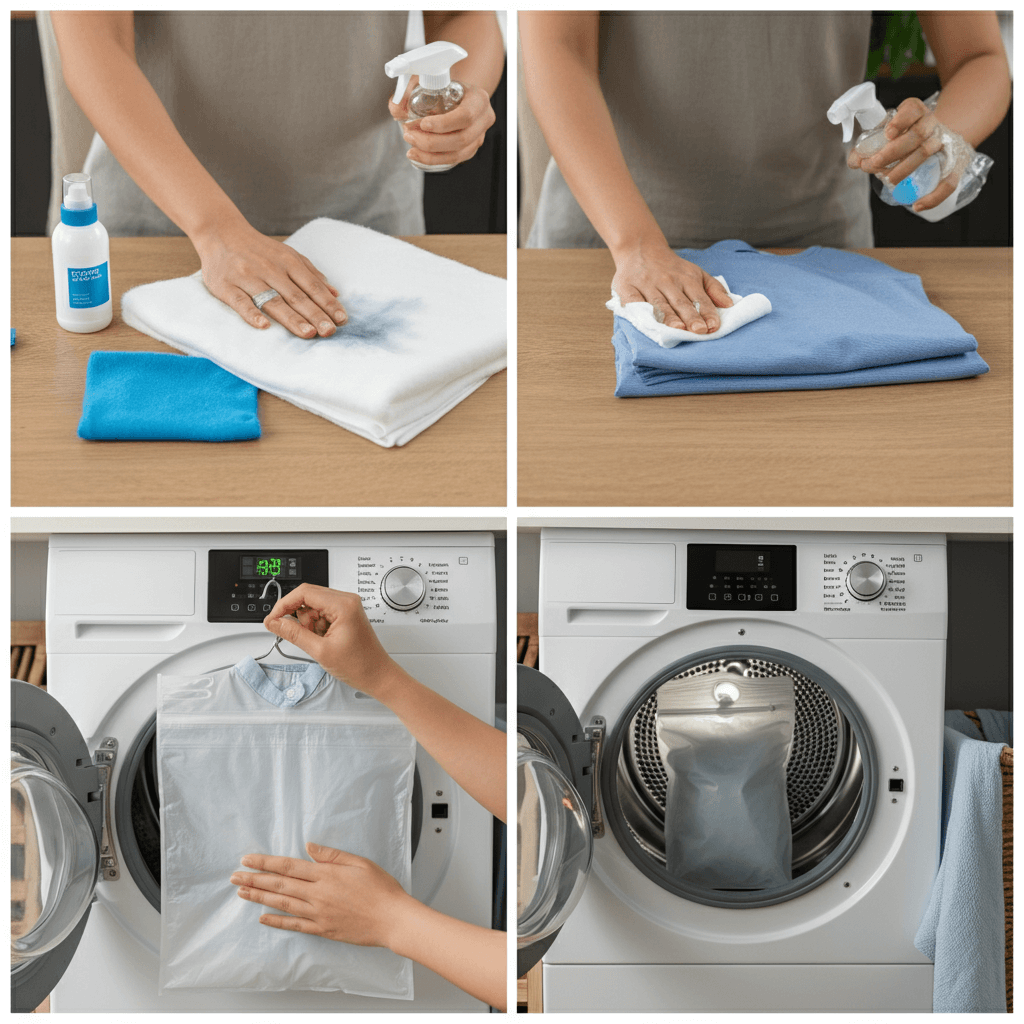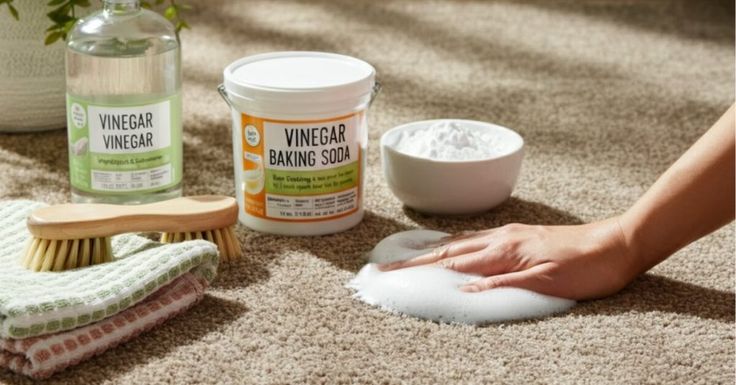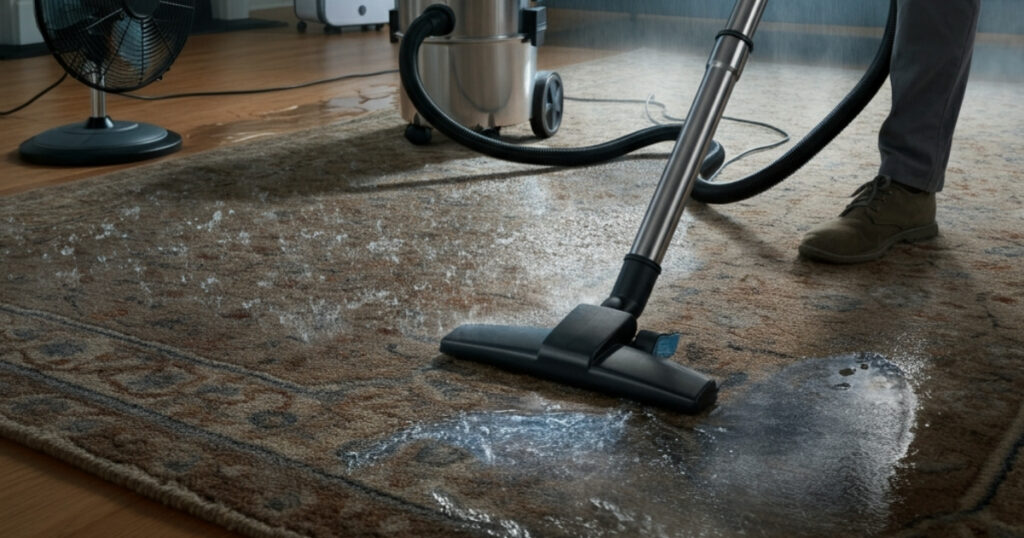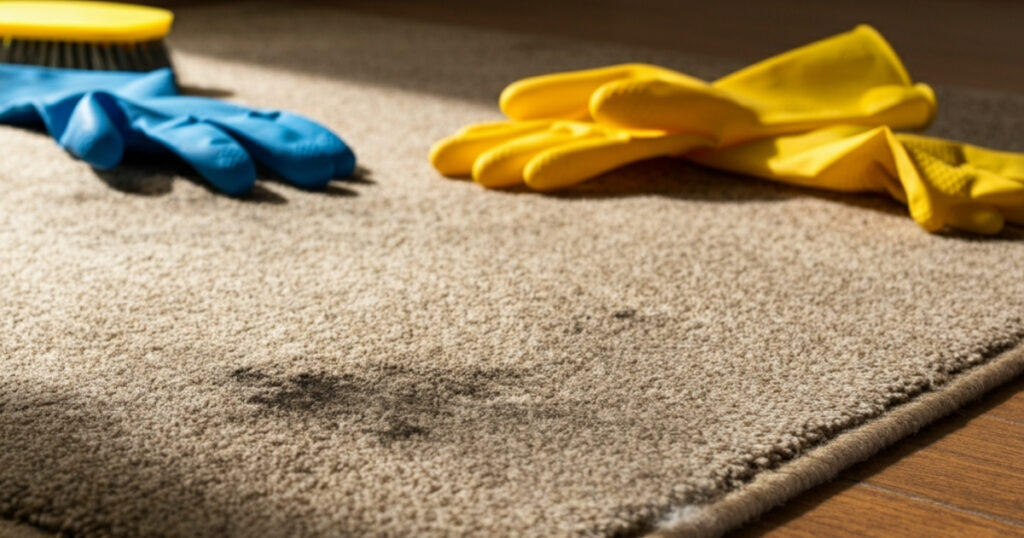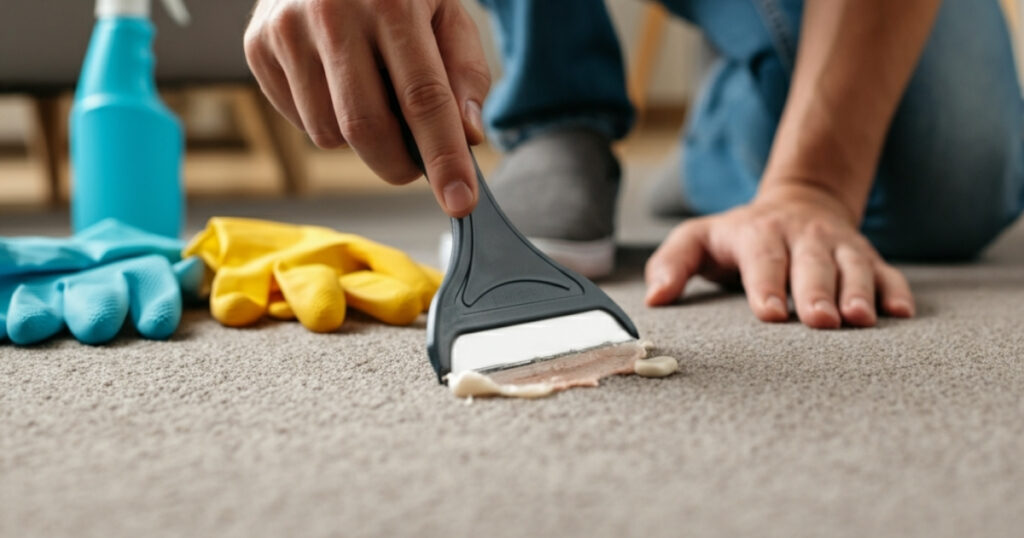As an Amazon Associate, I earn from qualifying purchases.
Professional dry cleaning services can drain your wallet quickly, especially when you have multiple delicate garments that need special care. However, learning how to do dry cleaning at home can save you hundreds of dollars annually while keeping your favorite clothes looking pristine. Most people assume dry cleaning requires harsh chemicals and professional equipment, but many garments labeled “dry clean only” can actually be cleaned safely at home using the right techniques and products.
Home dry cleaning involves using gentle cleaning methods that mimic professional processes without the expensive solvents typically used in commercial facilities. Whether you’re dealing with silk blouses, wool sweaters, or delicate dresses, mastering these techniques will help you maintain your wardrobe effectively while protecting your budget.
Contents Overview
Understanding Different Dry Cleaning Methods at Home
Before diving into specific techniques, it’s important to understand that home dry cleaning encompasses several different approaches. Each method works best for different types of fabrics and stains, so knowing when to use each technique is crucial for achieving professional-quality results.
Solvent-Free Cleaning Techniques
The safest approach to dry cleaning at home involves using solvent-free methods that rely on gentle detergents and careful handling. These techniques work particularly well for garments made from natural fibers like wool, silk, and cashmere. Instead of harsh chemicals, you’ll use specialized detergents designed for delicate fabrics, combined with specific washing and drying techniques that prevent shrinkage and damage.
Water-based cleaning can actually be more effective than traditional dry cleaning for removing certain types of stains, particularly those caused by sweat, food, and everyday wear. The key is using the right temperature, agitation level, and drying method for each specific fabric type.
Steam-Based Cleaning Methods
Steam cleaning represents another excellent option for refreshing and sanitizing garments without traditional washing. This method works exceptionally well for removing odors, killing bacteria, and relaxing wrinkles from delicate fabrics. Steam penetrates fabric fibers gently, lifting dirt and refreshing the material without the mechanical stress of washing machines.
Professional-grade garment steamers can be purchased for home use at a fraction of the cost of regular dry cleaning visits. Additionally, many household items can be steam-cleaned using simple techniques that don’t require specialized equipment.
Essential Supplies for Home Dry Cleaning
Successfully cleaning delicate garments at home requires having the right tools and products on hand. Fortunately, most of these items are readily available and cost significantly less than repeated trips to professional cleaners.
Cleaning Products and Detergents
Investing in high-quality, gentle cleaning products specifically designed for delicate fabrics is essential. Look for pH-neutral detergents that contain no bleach, brighteners, or harsh surfactants. Wool-specific detergents like Woolite or Eucalan work excellently for protein-based fibers, while silk-specific cleaners help maintain the luster and strength of silk garments.
Additionally, white vinegar serves as an excellent natural fabric softener and deodorizer, while baking soda helps remove odors and can act as a gentle abrasive for certain stains. Hydrogen peroxide (in low concentrations) can help remove organic stains from light-colored fabrics, though it should be tested in an inconspicuous area first.
Equipment and Tools
A few basic tools will make your home dry cleaning efforts much more effective. Mesh laundry bags protect delicate items during washing, while a salad spinner can be repurposed to gently remove excess water from small items like lingerie and silk scarves.
Clean, white towels are essential for blotting stains and providing support during the drying process. A spray bottle allows for precise application of cleaning solutions, and a soft-bristled brush (like a clean toothbrush) helps work out stubborn stains without damaging fabric fibers.
Step-by-Step Guide to Home Dry Cleaning
Learning how to do dry cleaning at home effectively requires following a systematic approach that prioritizes fabric safety while achieving thorough cleaning results. The process begins with careful preparation and assessment of each garment.
Fabric Assessment and Preparation
Start by examining each garment thoroughly, checking care labels and identifying the fabric composition. Look for stains, areas of heavy soiling, and any existing damage that might worsen during cleaning. Take photos of valuable items before cleaning to document their condition.
Test any cleaning solutions on a hidden area of the garment first, such as an inside seam or hem. Wait at least 30 minutes to observe any color changes, fabric shrinkage, or other adverse reactions before proceeding with full cleaning.
Remove any removable accessories like belts, shoulder pads, or decorative elements that might not withstand the cleaning process. Empty all pockets completely and check for items that might have been forgotten.
Stain Pre-Treatment Techniques
Address stains immediately for the best results, as set-in stains become increasingly difficult to remove over time. Different types of stains require different treatment approaches, so identifying the stain source helps determine the most effective removal method.
For protein-based stains like blood, sweat, or food, create a paste using cold water and enzyme-based detergent. Apply this paste to the stained area and allow it to sit for 15-30 minutes before proceeding with cleaning. Oil-based stains respond well to cornstarch or talcum powder applications that absorb the oil before cleaning.
Water-based stains often respond to gentle blotting with a clean, damp cloth, working from the outside of the stain toward the center to prevent spreading. Avoid rubbing or scrubbing, as this can damage delicate fibers and set stains more permanently.
Hand Washing Delicate Items
Fill a clean basin or sink with lukewarm water (never hot, as this can cause shrinkage and color bleeding). Add a small amount of gentle detergent specifically designed for the fabric type you’re cleaning. Too much detergent can leave residue and attract dirt more quickly.
Submerge the garment completely and gently agitate the water with your hands to create suds. Allow the item to soak for 5-10 minutes, then gently squeeze and release the fabric to work the cleaning solution through the fibers. Never wring, twist, or scrub delicate fabrics.
Drain the soapy water and refill the basin with clean, cool water for rinsing. Repeat the gentle squeezing motion to remove detergent residue, changing the water as many times as necessary until it runs completely clear. Any remaining soap will attract dirt and can cause fabric stiffness.
Special Techniques for Different Fabric Types
Different fabrics require tailored approaches when learning how to do dry cleaning at home effectively. Understanding the unique properties of each material helps prevent damage while achieving optimal cleaning results.
Silk Garment Care
Silk requires exceptionally gentle handling due to its protein-based structure, which can be weakened by alkaline conditions and high temperatures. Use cool water exclusively and specialized silk detergents that maintain the fabric’s natural pH balance.
When washing silk items, support the weight of wet fabric to prevent stretching. Lay flat items on clean towels and roll gently to absorb excess moisture without wringing. Hanging wet silk can cause permanent stretching and distortion of the garment’s shape.
Iron silk while slightly damp using a low temperature setting and a pressing cloth to prevent water spots and shine. Store silk garments in breathable fabric bags rather than plastic to prevent moisture buildup and yellowing.
Wool and Cashmere Treatment
Wool fibers have natural scales that can interlock and cause felting when exposed to heat, agitation, and pH changes. Always use cool water and wool-specific detergents that contain lanolin to maintain the fiber’s natural softness and water resistance.
Support wet wool garments completely when moving them, as the fibers become much weaker when saturated. Lay sweaters flat on towels to dry, reshaping them to their original dimensions while damp. Never hang wool items to dry, as gravity will stretch the fibers permanently.
Cashmere requires even gentler treatment than regular wool due to its finer fiber structure. Consider using a mesh bag even for hand washing to minimize agitation, and be especially careful about water temperature consistency throughout the cleaning process.
Synthetic Fabric Handling
Many synthetic fabrics labeled “dry clean only” can actually be safely cleaned at home using gentle methods. Polyester, nylon, and acrylic blends often respond well to cool water washing with regular gentle detergents.
However, synthetic fabrics are more prone to static buildup and can attract oils and odors more readily than natural fibers. Use fabric softener sparingly, as too much can leave residue that attracts dirt. White vinegar in the rinse water helps reduce static while naturally deodorizing the fabric.
Some synthetic fabrics, particularly those with special finishes or coatings, may require professional cleaning. When in doubt, test a small, hidden area first or consult with a fabric care professional.
Drying and Finishing Techniques
Proper drying and finishing techniques are crucial components of learning how to do dry cleaning at home successfully. These final steps can make the difference between professional-looking results and damaged garments.
Air Drying Methods
Most delicate fabrics should be air-dried to prevent heat damage and shrinkage. However, the specific drying method depends on the fabric type and garment construction. Knitted items like sweaters should always be dried flat to maintain their shape, while woven fabrics can often be hung carefully.
When laying items flat to dry, use clean, absorbent towels and reshape the garment to its original dimensions while damp. Change towels as they become saturated to speed drying and prevent musty odors. Ensure adequate air circulation around drying garments to prevent mold and mildew growth.
For hanging items, use padded hangers to prevent creasing and stretching. Button or zip garments closed to help them maintain their shape during drying. Avoid direct sunlight, which can fade colors and weaken fibers, but ensure adequate ventilation to prevent moisture buildup.
Professional Finishing at Home
Achieving professional-looking results requires attention to finishing details that many people overlook. Proper pressing and steaming techniques can make home-cleaned garments look indistinguishable from professionally dry-cleaned items.
Steam pressing works better than dry heat for most delicate fabrics, as the moisture helps relax fibers and remove wrinkles more effectively. Use a pressing cloth to protect delicate surfaces and prevent shine, especially on dark fabrics and synthetic materials.
For items that can’t be pressed directly, hang them in a steamy bathroom or use a garment steamer to remove wrinkles and refresh the fabric. This technique works particularly well for items with complex construction or delicate embellishments that might be damaged by direct pressing.
Troubleshooting Common Issues
Even with careful attention to technique, problems can occasionally arise when learning how to do dry cleaning at home. Understanding how to address common issues helps salvage garments and improve future cleaning efforts.
Addressing Shrinkage and Stretching
If a garment has shrunk slightly during cleaning, you may be able to restore some of its original size while the fabric is still damp. Gently stretch the item back to its original dimensions and pin it in place on a flat surface while drying.
For wool items that have shrunk, try soaking them in cool water with hair conditioner, which can help relax the fibers. Work the conditioner through the fabric gently, then carefully stretch the item back to size while rinsing with clean water.
Stretching problems are more difficult to correct than shrinkage. Prevention is key—always support wet garments fully and avoid hanging heavy items. If stretching has occurred, try washing the item again and reshape it carefully during the drying process.
Handling Persistent Stains
Some stains may not respond to initial treatment and require additional attention. Repeat the pre-treatment process with a slightly stronger solution or try a different stain removal approach based on the stain type.
For stubborn stains on washable fabrics, create a paste using oxygen bleach (safe for colors) and water. Apply this paste to the stained area and allow it to work for several hours before rewashing the item. This gentle bleaching action can remove many organic stains without damaging the fabric.
Consider professional cleaning for valuable items with persistent stains, as aggressive home treatment attempts might cause permanent damage. Sometimes the cost of professional stain removal is worth preserving a favorite garment.
Cost Comparison and Benefits
Understanding the financial benefits of learning how to do dry cleaning at home helps justify the initial investment in supplies and time spent mastering techniques. The savings can be substantial, particularly for households with multiple delicate garments.
Financial Savings Analysis
Professional dry cleaning typically costs between $5-20 per garment, depending on the item type and local market rates. For families that dry clean multiple items weekly, annual costs can easily exceed $1,000. Home dry cleaning reduces these costs to just a few dollars per load, including detergent, water, and energy costs.
The initial investment in quality detergents, tools, and equipment typically pays for itself within a few months of regular use. High-quality wool detergent might cost $15-20, but it can clean dozens of garments. A good garment steamer costs $50-100 but replaces hundreds of dollars in professional pressing services.
Additionally, home cleaning eliminates transportation costs and time spent dropping off and picking up items from cleaners. For busy households, this time savings can be as valuable as the financial benefits.
Environmental and Health Benefits
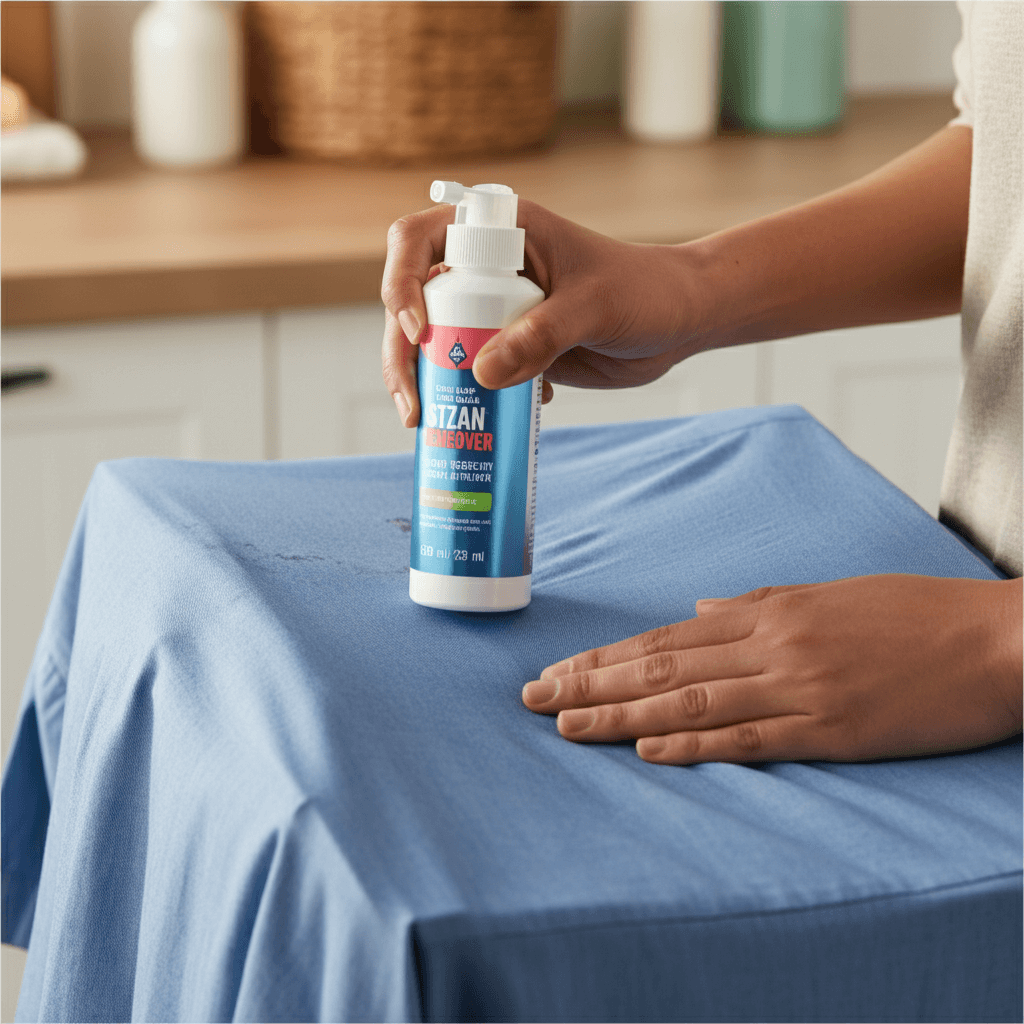
Home dry cleaning significantly reduces exposure to potentially harmful chemicals used in traditional dry cleaning processes. Perchloroethylene (PERC), the most common dry cleaning solvent, has been linked to health concerns and environmental contamination.
Water-based cleaning methods use biodegradable detergents that are gentler on both fabrics and the environment. This approach reduces chemical runoff and air pollution associated with commercial dry cleaning operations.
Many people find that their clothes smell fresher and feel softer when cleaned at home using gentle methods. Professional dry cleaning chemicals can leave residual odors and may irritate sensitive skin, while home cleaning allows complete control over the products used.
Frequently Asked Questions
1. Can all “dry clean only” clothes be washed at home?
No, not all garments labeled “dry clean only” can be safely cleaned at home. Items with structured construction, leather or suede components, or special finishes often require professional cleaning. However, many simple garments made from silk, wool, or delicate synthetics can be successfully cleaned using gentle home methods.
2. How often should I clean delicate garments at home?
Most delicate garments don’t need frequent cleaning unless they’re visibly soiled or odorous. Wool sweaters might only need cleaning 2-3 times per season, while silk blouses worn close to the skin may need cleaning after each wear. Over-cleaning can damage delicate fibers more than under-cleaning.
3. What’s the biggest mistake people make when dry cleaning at home?
The most common mistake is using water that’s too hot, which can cause shrinkage, color bleeding, and fiber damage. Always use cool or lukewarm water for delicate fabrics, and test any cleaning method on a hidden area first.
4. How do I know if a stain removal attempt worked?
Allow the garment to dry completely before assessing stain removal success. Many stains appear to be gone when the fabric is wet but become visible again as it dries. If the stain persists, repeat the treatment or try a different approach before the stain sets permanently.
5. Is it worth investing in a home dry cleaning kit?
Commercial home dry cleaning kits can be useful for refreshing garments between professional cleanings, but they’re not suitable for heavily soiled items or true stain removal. Hand washing with appropriate detergents typically provides better results for most home cleaning needs.
Mastering Your Home Dry Cleaning Skills
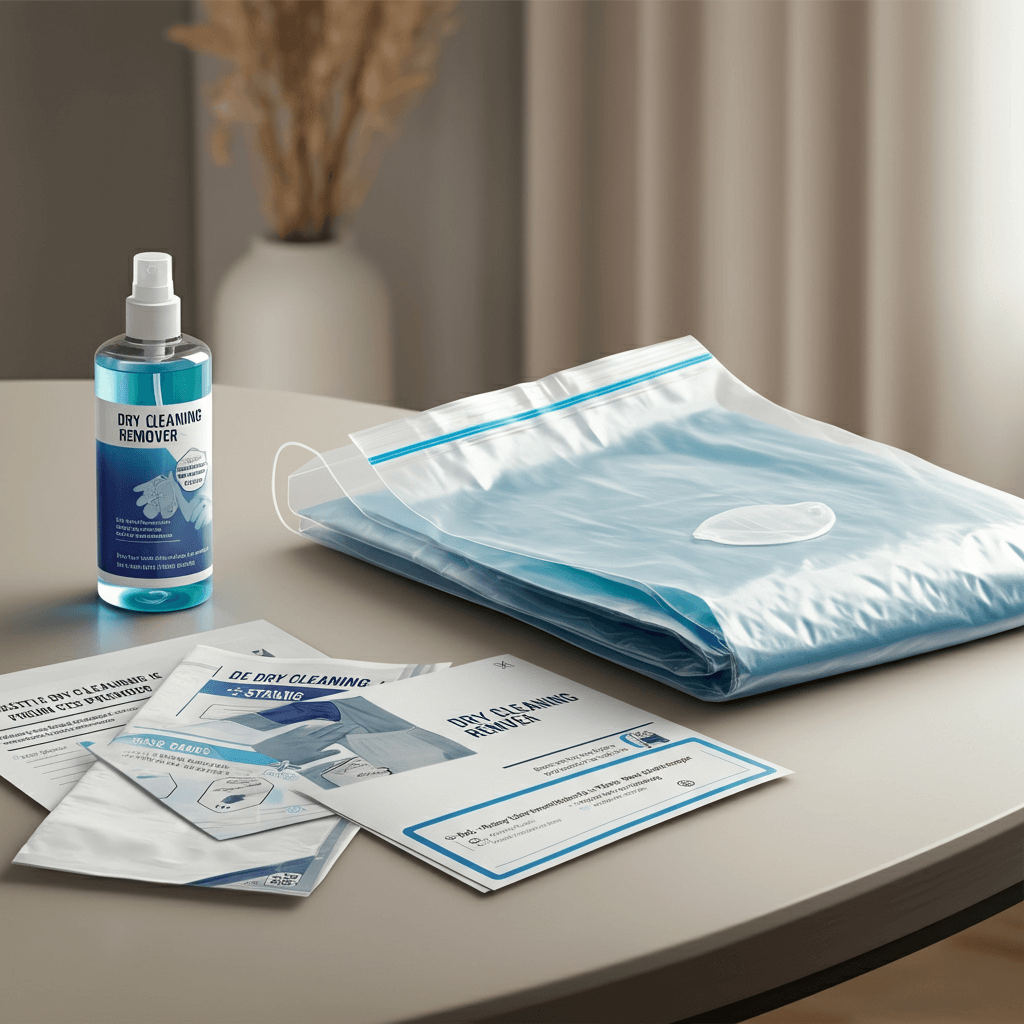
Learning how to do dry cleaning at home effectively requires patience, practice, and attention to detail, but the rewards extend far beyond financial savings. You’ll gain greater control over your wardrobe care, reduce exposure to harsh chemicals, and develop valuable skills that last a lifetime.
Start with less valuable items to practice your techniques before moving on to expensive or sentimental garments. Keep detailed notes about what works for different fabric types and stain situations, building your own reference guide for future use.
Remember that some items will always require professional attention, and knowing when to seek expert help is part of becoming proficient in home garment care. With time and experience, you’ll develop the confidence to handle most of your delicate cleaning needs at home while maintaining the quality and longevity of your favorite clothes.
As an Amazon Associate, I earn from qualifying purchases.

